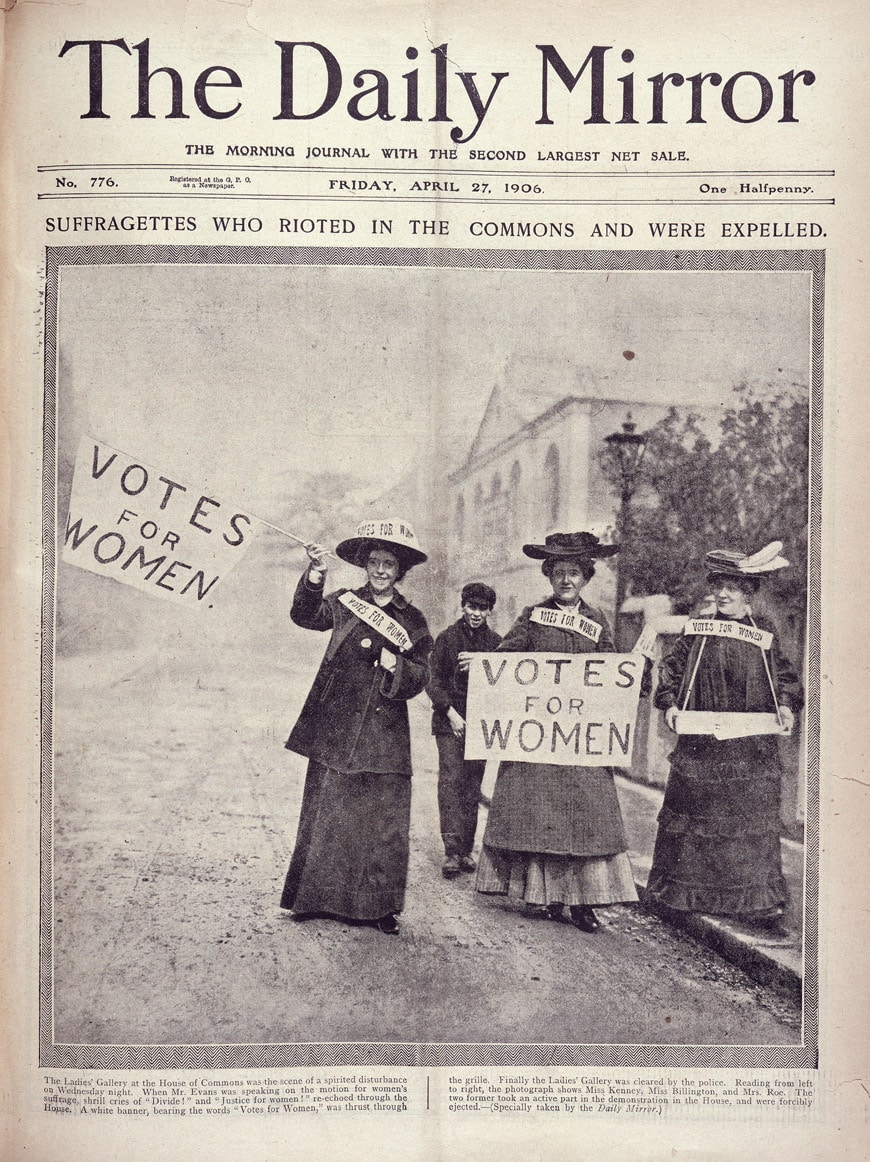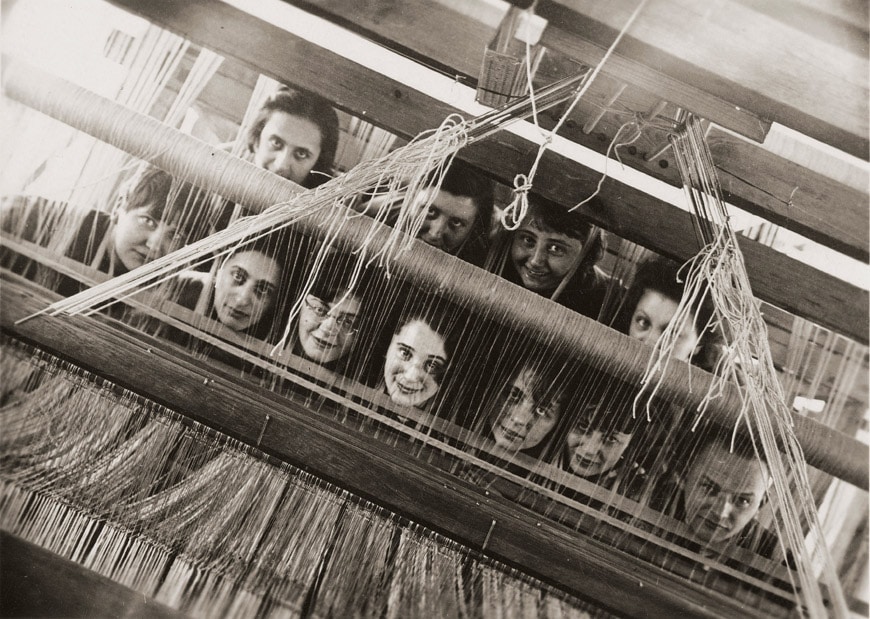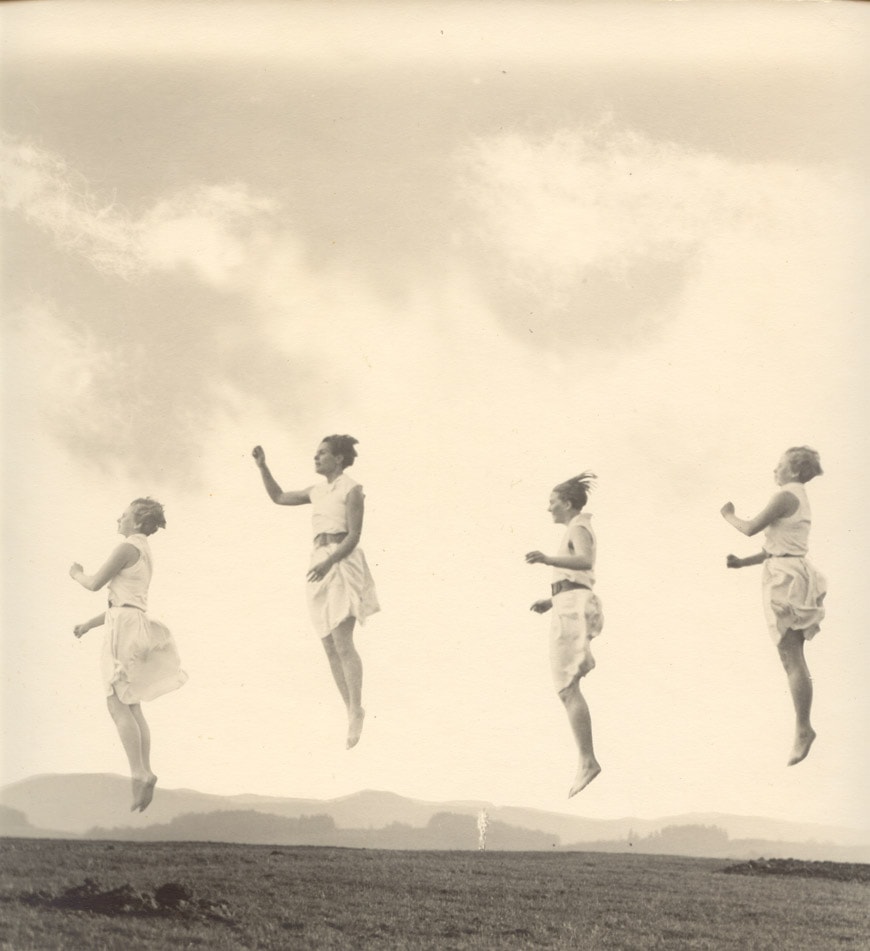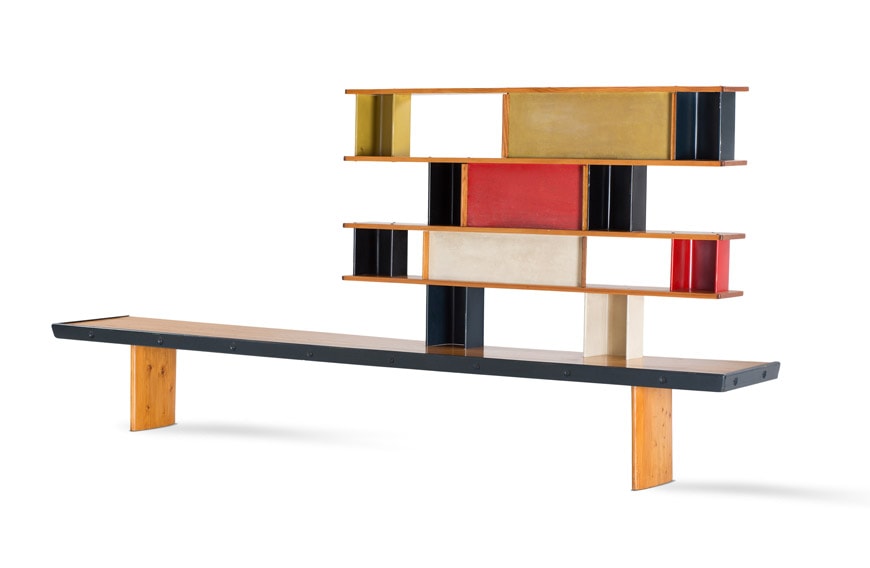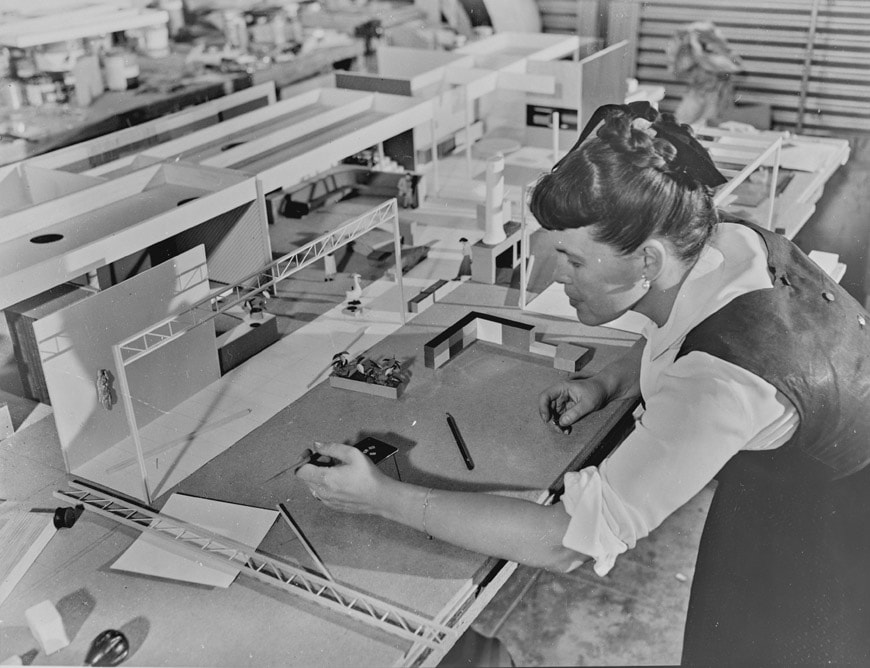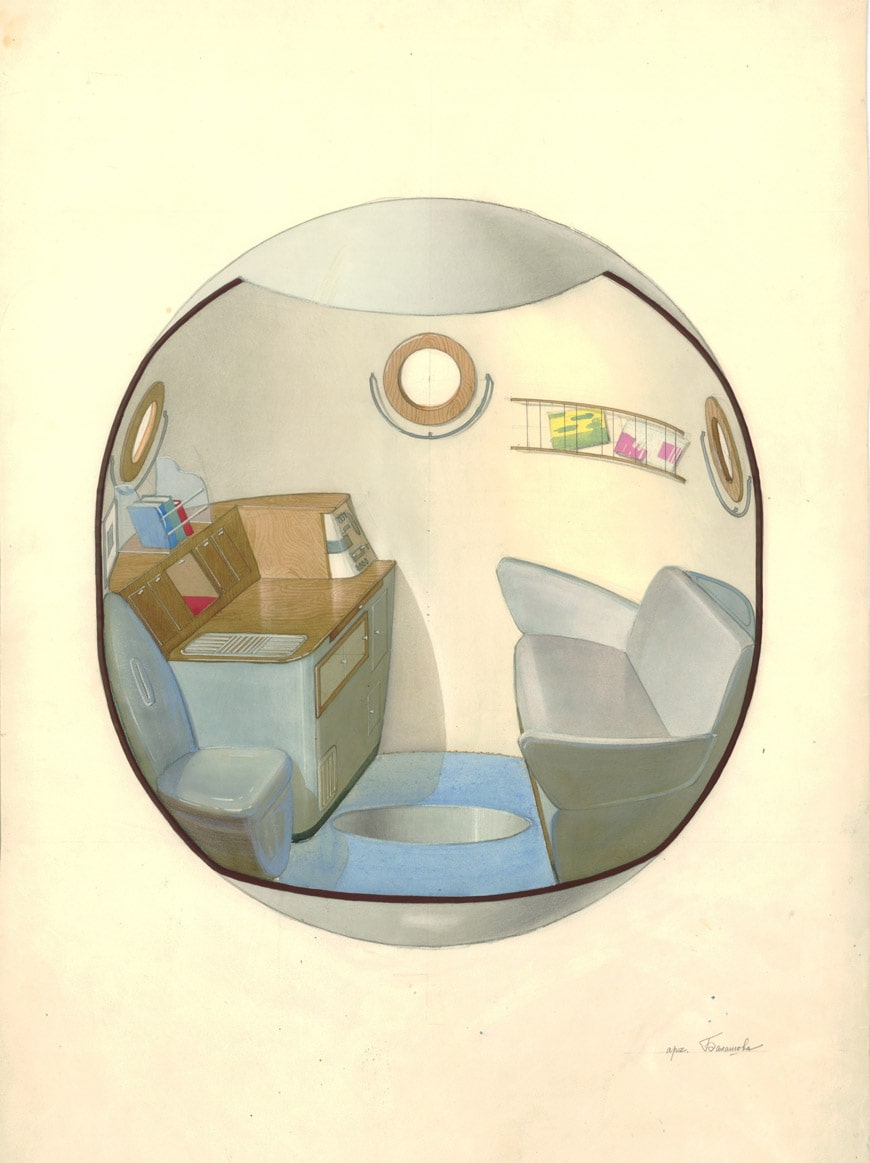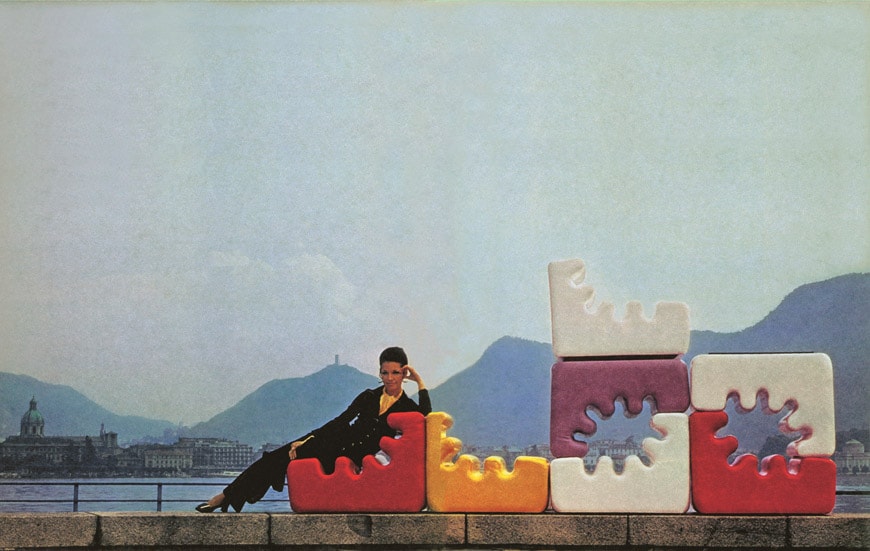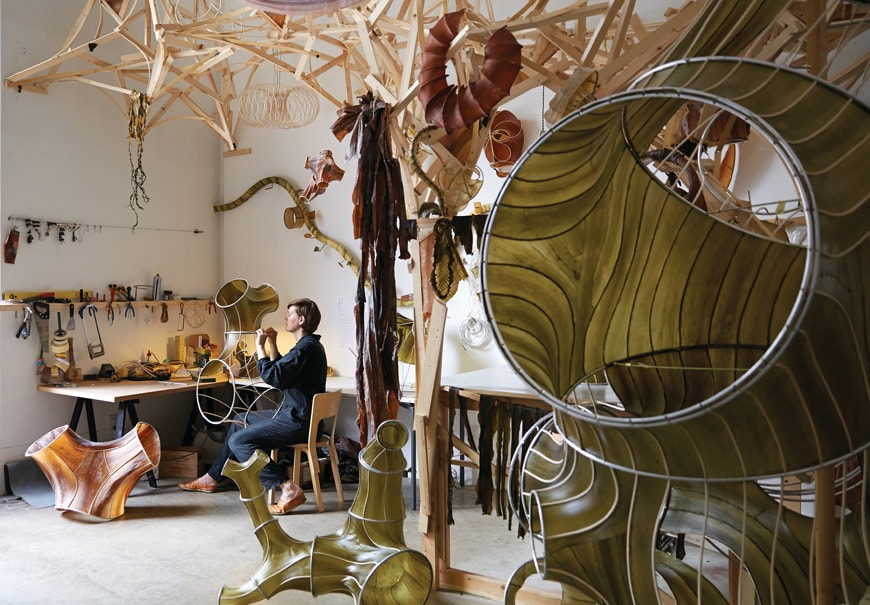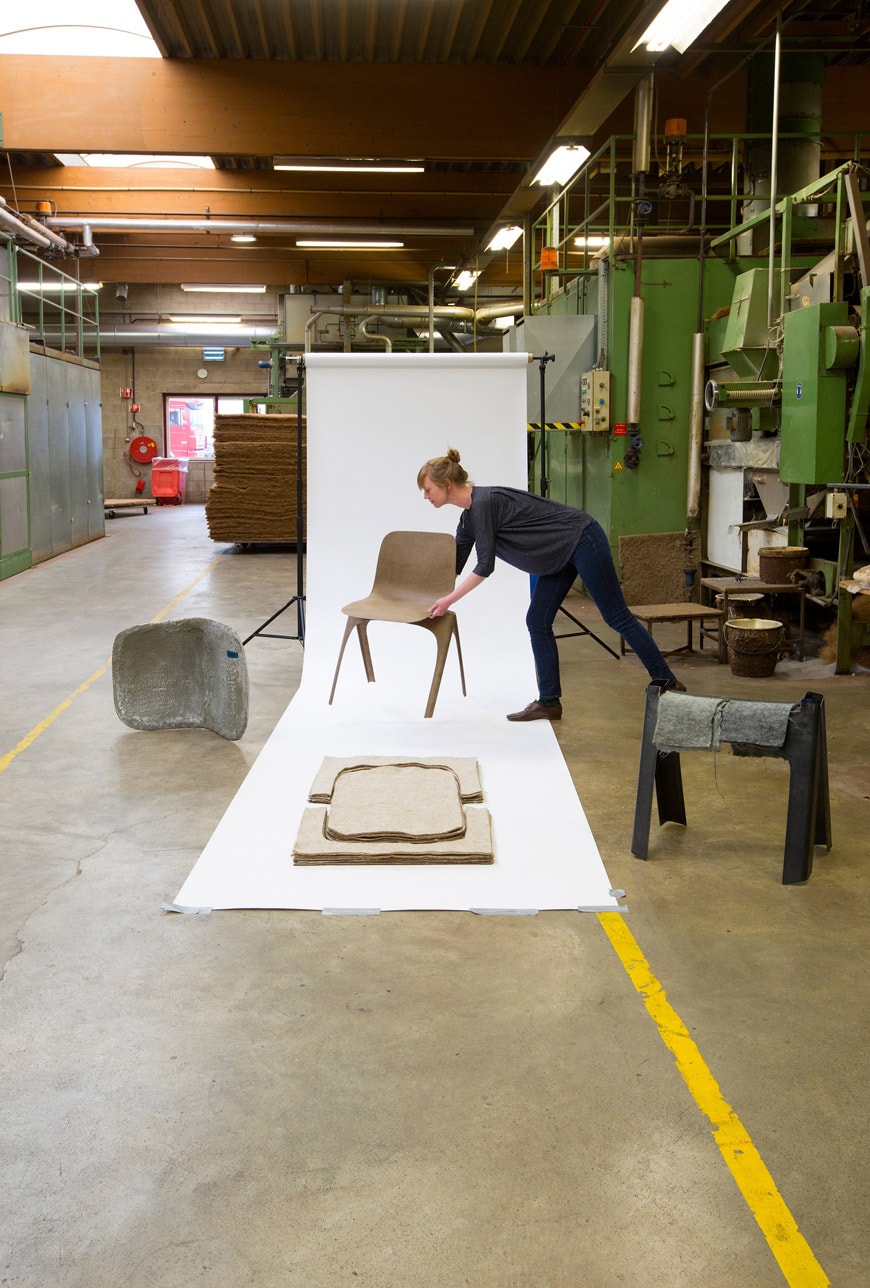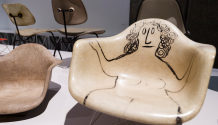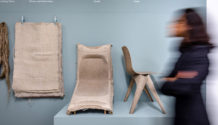Here We Are! Women in Design at the Vitra Design Museum
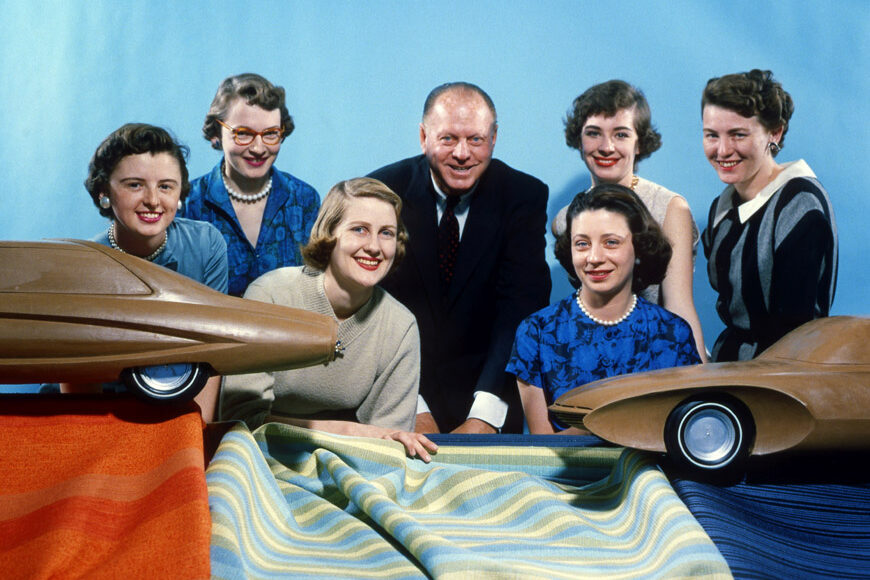
In the present day, nearly half the design students are women; yet, even today, books about the history of design often fail to mention them.
The exhibition “Here We Are! Women in Design 1900 – Today” – running at the Vitra Design Museum from September 23, 2021, through March 6, 2022 – traces the work and working conditions of women in design from early modernism to the present, highlighting a wide range of works and contributions. It defines a clear stance on a key social issue and presents the modern design in a new light. The exhibition consists of four parts and takes visitors on a journey through the past 120 years of design history.
Cover image: GM’s »Damsels of Design«, photographed c. 1955. From left: S.Vanderbilt, R. Glennie, M. Ford Pohlman, H. Earl, J. Linder, S. Logyear, P. Sauer. Courtesy General Motors Design Archive & Special Collections.
The first part focuses on the development of design in Europe and the United States in around 1900 when design emerged as a profession in its own right. This was a time of intensifying struggle for female suffrage, too, and the bid for emancipation is reflected in the design produced, for example, by such social reformers as Jane Addams and Louise Brigham, whose works would today be described as »Social Design«. In New York, Elsie de Wolfe helped shape the new professional field of interior design, and women designers trained or taught at the Bauhaus, the Russian VKhUTEMAS, and the Deutsche Werkstätten in Dresden-Hellerau.
A whole world as yet undiscovered by design history can be found at the Loheland School, which like the Bauhaus was established in 1919, but did only admit women.
The Bauhaus accepted both male and female students, but many women who enrolled there found themselves studying crafts like textiles or ceramics. In presenting their activities, the exhibition demonstrates that while improved education may have meant increased professionalism, women were still being urged towards traditional roles.
Newspaper article on suffragettes who protested in the House of Commons, The Daily Mirror, London, April 27, 1906, © The British Library Board.
The second part of the exhibition concentrates on the 1920s to 1950s, an era during which women designers like Charlotte Perriand, Eileen Gray, and Clara Porset began to make their name internationally even though patriarchal patterns endured. In the Parisian luxury industry, Cartier’s creative director Jeanne Toussaint defined the style of jewelry creations for many decades. She led the »Département S« with its products for the modern woman and promoted ornaments and accessories projecting a progressive, self-confident image. Some of the women designers portrayed in this section collaborated closely with their partners: Ray Eames with her husband Charles, Aino Aalto with Alvar Aalto. While frequently overshadowed by their male counterparts, they often contributed far more substantially to the joint works than was assumed in the past. The best-known example in this context is Charlotte Perriand, whose share in the furniture designs she created with her famous colleague Le Corbusier has been widely publicized in recent years, resulting in a complete reassessment of her work. The exhibition also features designers who worked independently all their lives, like the ceramic artist Eva Zeisel, who had her first solo exhibition at the Museum of Modern Art as early as 1946 and reminds us of those who merit far more attention than they have been given in the past, like Trude Petri.
Life at the Bauhaus: Group portrait of the weavers behind their loom in the weaving workshop, Bauhaus Dessau, 1928. © Bauhaus-Archiv, Berlin.
Loheland photo workshop: Jump (Montage) c. 1930. Photo: Loheland-Archiv, Künzell.
Left: Berenice Abbott, portrait of Eileen Gray, 1927, © National Museum of Ireland.
Right: Eileen Gray, Untitled / Dressing cabinet for the Tempe a Pailla house, 1932-34
© Vitra Design Museum, photo: Jürgen Hans.
The third part of “Here We Are! Women in Design 1900 – Today” addresses the period from 1950 to the end of the 1980s.
The second wave of feminism emerged in the 1960s to oppose the conservative post-war mentality, for example, in the Swiss Exhibition on Women’s Work held in 1958. Women’s work was still defined as domestic work, the home as women’s proper sphere, but despite this limited view of their activities, many women were extraordinarily creative and productive. As role models and opportunities continued to change and evolve, the ambivalences and upheavals of these turbulent decades are evident both in the brightly colorful Marimekko design of the 1970s and in some of the spectacular postmodern objects created by such Italian designers as Nanda Vigo, Gae Aulenti, and Cini Boeri. Few people are aware that the futuristic interiors of the Russian space program’s orbital modules were also designed by a woman, Galina Balashova, whose work is gradually being discovered.
Charlotte Perriand, Untitled / Bibliothèque Tunisie, 1952. © Vitra Design Museum, photo: Jürgen
Hans, © VG Bild-Kunst, Bonn 2021.
Ray Eames working on a model, 1950. © Eames Office LLC
Galina Balashova, Sketch of the interior of the orbital (living) compartment of the Soyuz spacecraft. Variant 1, 1963, © The Museum of Cosmonautic, Moscow.
Advertisement for Liisi Beckmann’s Karelia lounge chair, 1969. Courtesy Zanotta SpA – Italy
Cini Boeri, Tomu Katayanagi Ghost, 1987 © Vitra Design Museum, photo: Jürgen Hans
The exhibition’s fourth part brings us to the present day. Works by established international designers including Matali Crasset, Patricia Urquiola, Inga Sempé, Ilse Crawford, or Hella Jongerius prove that today, a successful career in design is equally possible for both men and women. Some women designers have been pushing the boundaries of their discipline and make crucial contributions towards redefining the meaning of design as such. These include Julia Lohmann, whose research into marine algae promises to yield new, sustainable materials, as well as Christien Meindertsma with her critical examination of production processes. This part of the exhibition also introduces a number of recent initiatives demonstrating how feminist discourse questions patterns of authorship, education, and recognition in design and architecture in the light of such concepts as diversity and intersectionality. In »Weaving Constellations of Identity«, for example, the Matri-Archi(tecture) collective addresses the personal experience of African and Black designers in a work created especially for this exhibition, while numerous networks and publications put the established design narratives and structures up for discussion. The workshops and community platform offered by the Futuress collective, for example, outline a striking alternative to academic education with its many limitations.
Julia Lohmann in the Department of Seaweed Studio, Victoria and Albert Museum, London, 2013, photo: Petr Krejci.
Christien Meindertsma with the Flax Chair, 2015 © Studio Aandacht
People gather for the Women’s March in Washington D.C., 21 January 2017 Picture Alliance / Reuters | Shannon Stapleton.
All pictures courtesy of Vitra Design Museum
Here We Are! Women in Design 1900 – Today
23 September 2021 / 6 March 2022
Vitra Design Museum
Charles-Eames-Straße 2, 79576 Weil am Rhein, Germany
copyright Inexhibit 2025 - ISSN: 2283-5474

